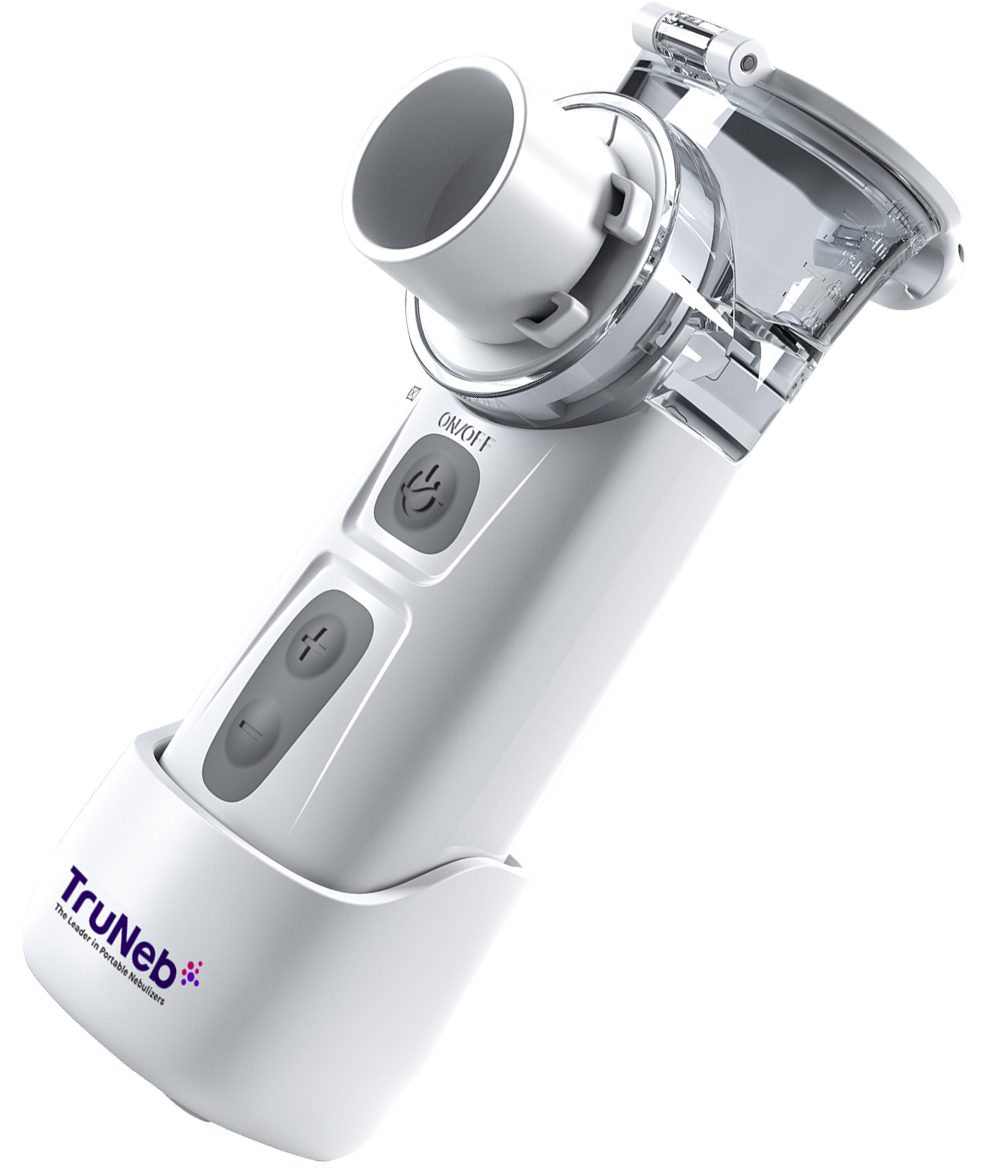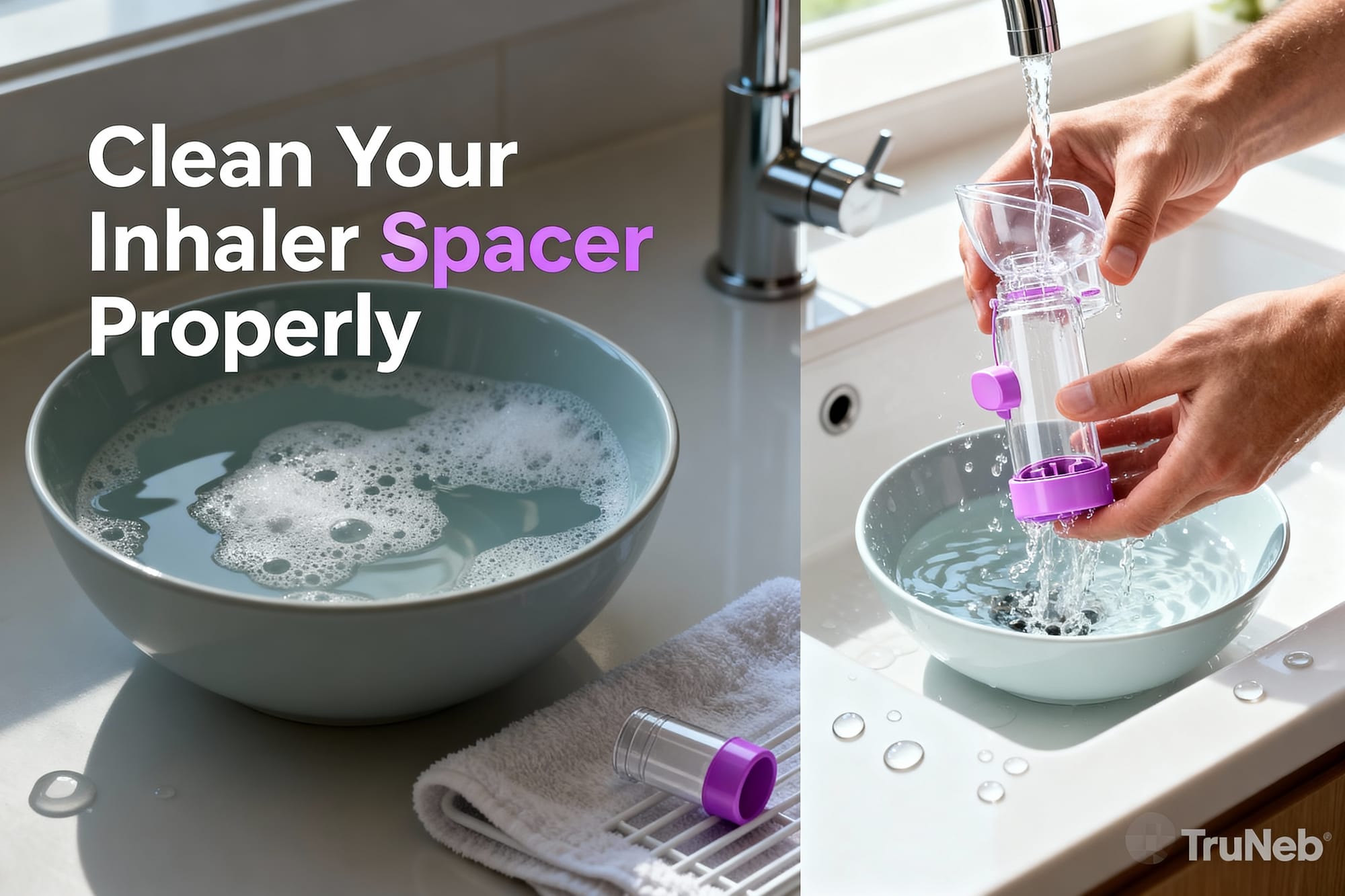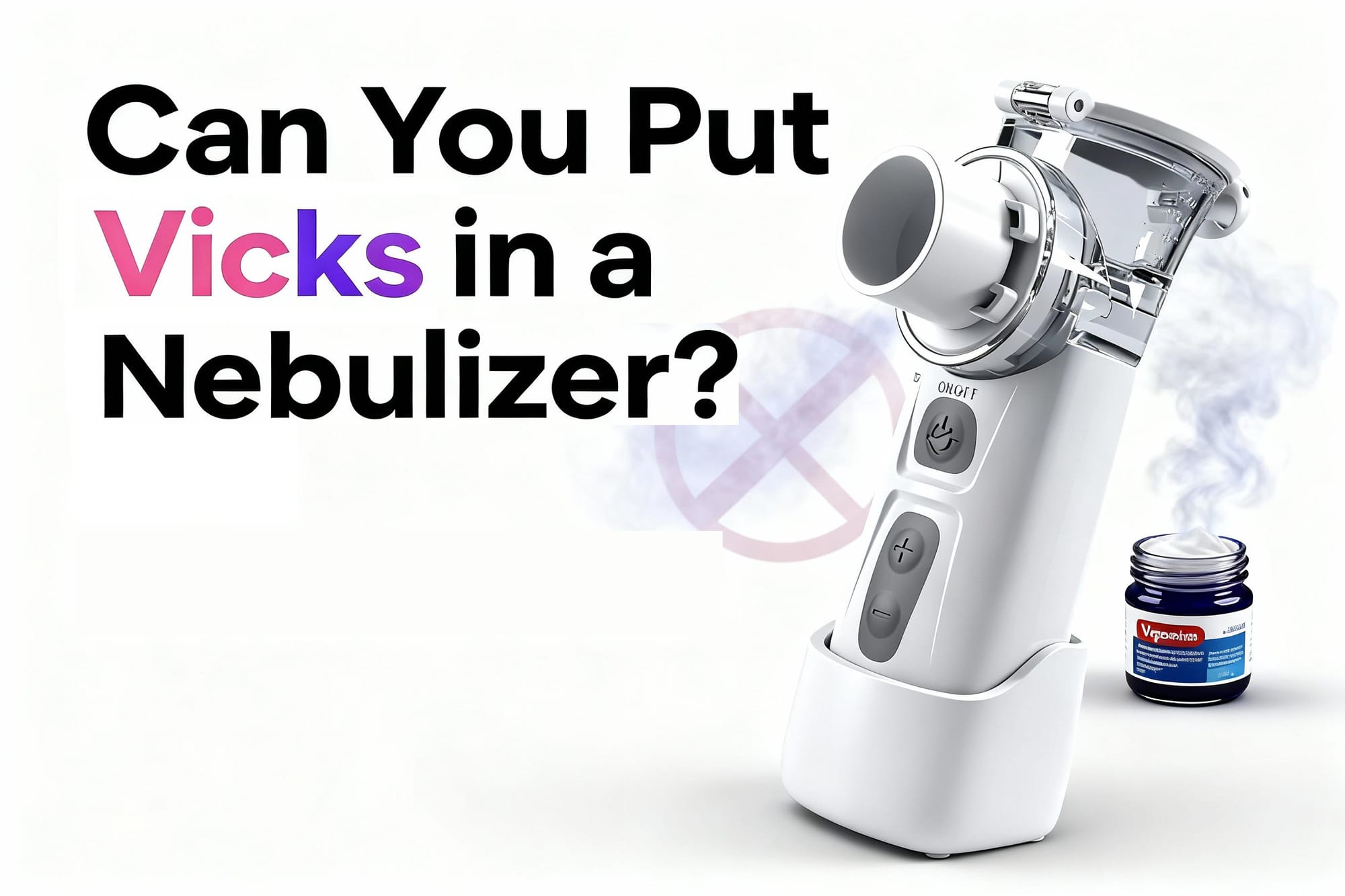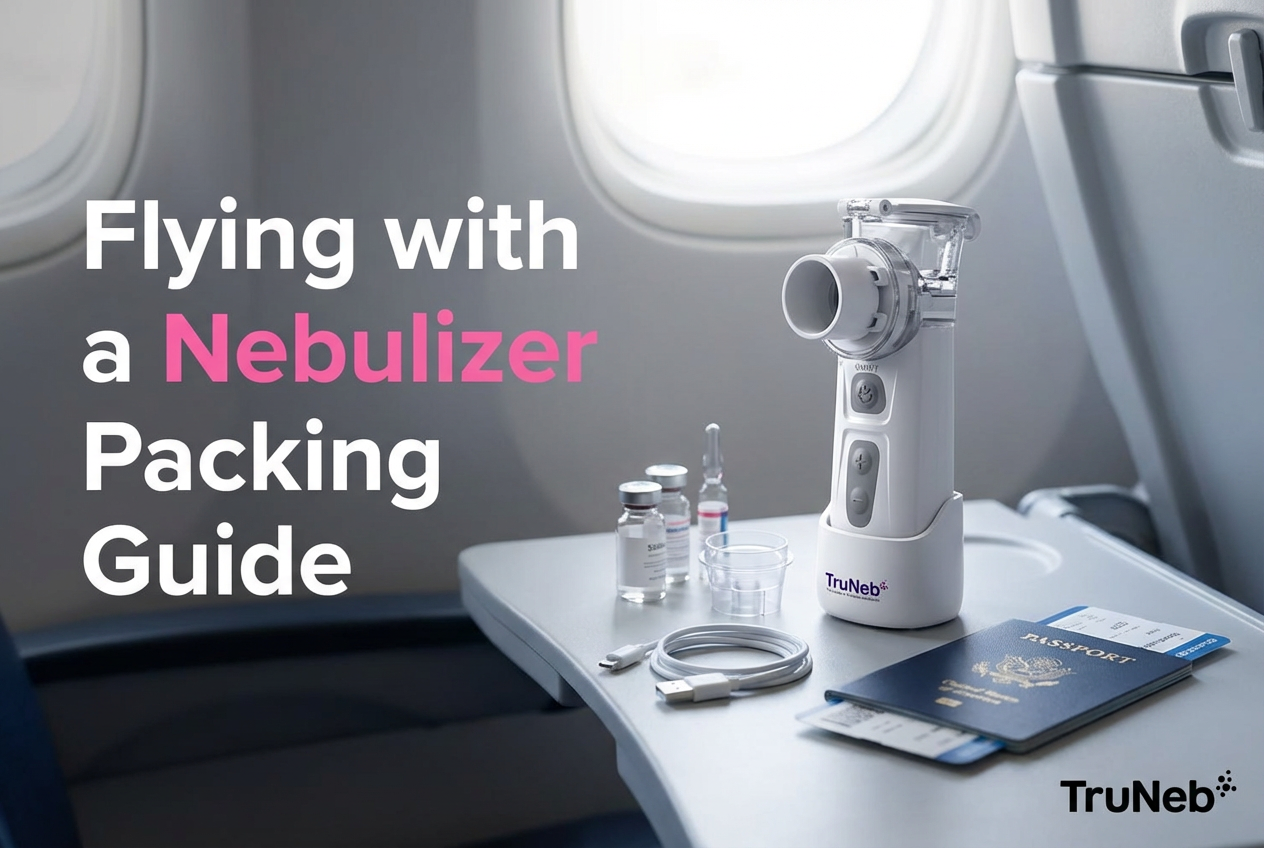On this page
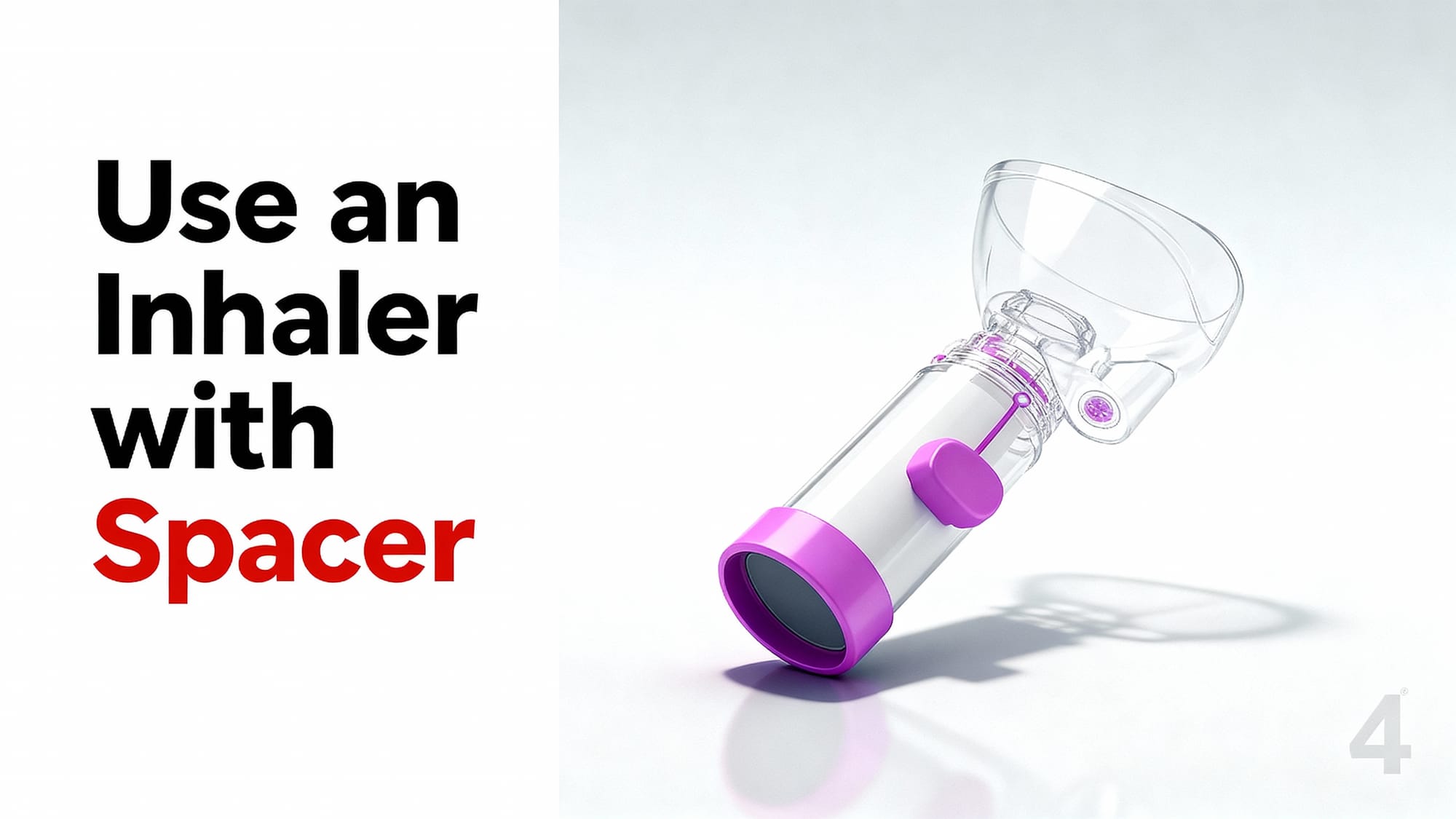
Why Using a Spacer with Your Inhaler Matters
A spacer (also called a valved holding chamber) is a plastic tube that attaches to your metered-dose inhaler (MDI). It slows the spray, so more medicine can reach your lungs and less sticks in your mouth and throat. This can make each puff work better, especially if timing the spray and your breath is hard.
This guide covers pressurized “puffer” inhalers called MDIs; dry powder inhalers (DPIs) use a different technique and don’t use spacers. Spacers are commonly recommended for people with asthma and COPD. They help reduce side effects from steroid inhalers and make quick-relief medicine easier to breathe in. Studies show a lot of people don’t use inhalers correctly; a spacer helps fix the most common technique problems.
One-liner: A spacer gives the medicine time and space to travel into your lungs, which can improve how well your inhaler works.
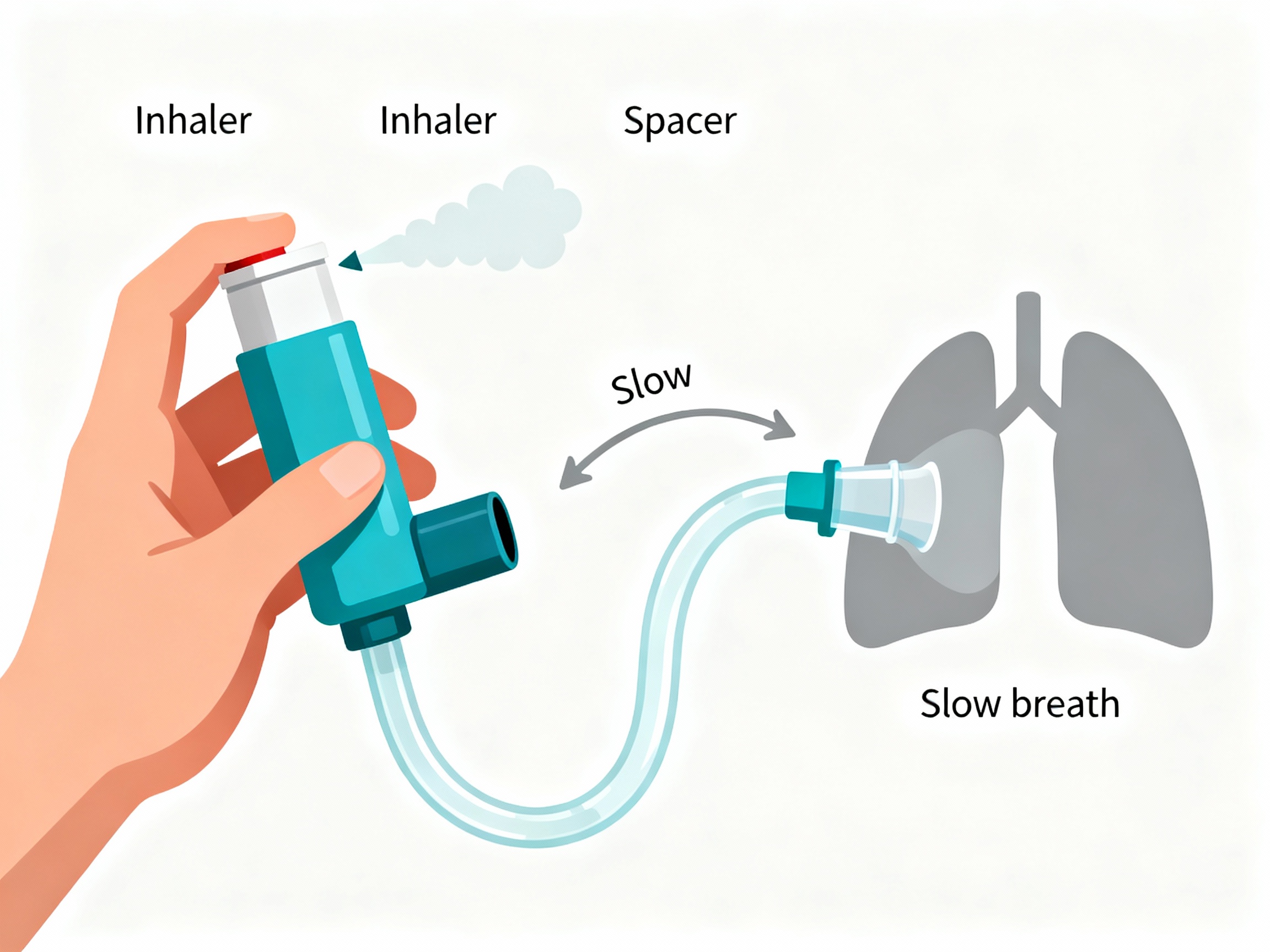
How to Use an Inhaler with a Spacer — Step by Step
- Shake and prime if needed. Shake your inhaler well for a few seconds. If it’s new or hasn’t been used recently, prime it as the label directs (release test sprays into the air).
- Attach the spacer. Take off the inhaler cap. Insert the inhaler mouthpiece into the spacer.
- Sit or stand tall, then breathe out away from the spacer. Empty your lungs first. Don’t exhale into the spacer.
- Seal your lips on the spacer mouthpiece. Place it between your teeth, close lips tightly to make a seal.
- Press the canister once. Right after you press, start to inhale slowly and steadily through your mouth until your lungs feel full — as if sipping hot soup.
- Hold your breath about 10 seconds. Then remove the spacer and breathe out slowly.
- If using a steroid inhaler, rinse and spit. This can help reduce mouth/throat side effects.
- Need another puff? Wait 30–60 seconds, then repeat with one puff at a time.
Tip: If you can’t take one big breath (common for young kids), your doctor might teach “tidal breathing” with a spacer: normal gentle breaths into the mouthpiece or mask right after the puff.
One-liner: Use one puff at a time, breathe in slowly, and hold your breath about 10 seconds for best delivery.
Tips to Avoid Common Mistakes
- Exhaling into the spacer. Always breathe out away from the spacer first, then seal and inhale. Blowing into the chamber can push medicine out or add moisture.
- Spraying multiple puffs at once. Only load one puff into the spacer at a time. Multiple puffs can stick to the chamber and reduce your dose.
- Inhaling too fast or too late. Start a slow, steady breath right after you press the inhaler. Fast gasps make medicine hit your throat.
- Skipping the breath-hold. Try to hold your breath about 10 seconds so medicine can settle in your airways.
- Forgetting to shake or prime. This can lead to uneven doses or no medicine on the first spray.
- Not cleaning the spacer. Static and residue can build up and reduce delivery.
- Confusing devices. Don’t confuse steam inhalers with spacers or nebulizers — steam devices are NOT for breathing prescription medications.
One-liner: One puff, slow breath, and a short breath-hold beats rushing multiple sprays.
Cleaning and Maintaining Your Spacer
- Wash the spacer in warm water with mild dish soap. Let parts air-dry fully. Avoid wiping the inside to reduce static buildup.
- How often: Clean about once a week, or as directed by the manufacturer.
- Check for wear: Replace the spacer if it’s cracked, warped, or the one-way valve doesn’t open and close smoothly; replace per the manufacturer’s guidance.
- Keep the inhaler clean: Wipe the plastic mouthpiece/actuator as the labeling directs to help prevent blockages. Watch the dose counter and replace the inhaler when it’s empty.
- Storage: Keep your inhaler and spacer at room temperature, dry, and out of extreme heat or cold.
One-liner: Weekly wash and air-dry helps reduce static so more medicine reaches your lungs.
| Aspect | Benefit | Considerations |
|---|---|---|
| Medication delivery | More medicine reaches lungs vs MDI alone | Start a slow inhale right after the puff |
| Coordination | Easier timing; helpful for kids and adults | Technique still matters for best results |
| Mouth/throat side effects (steroids) | Less medicine left in mouth/throat | Still rinse and spit after steroid MDIs |
| Compatibility | Works with pressurized MDIs | Not for dry powder or soft-mist inhalers |
| Maintenance | Valve holds dose briefly in chamber | Wash weekly; air-dry to reduce static |
| Portability & durability | Reusable | Extra device to carry; plastic can wear/need replacing |
Bottom line: For most people, better delivery outweighs the added cleaning and carry.
Safety and When to Seek Care
Safety Note
- If your inhaler contains a steroid, remember to rinse and spit after use.
- Talk to your doctor before trying a new medication or changing your inhaler routine.
- If you’re unsure about your technique, ask your doctor to watch you use your inhaler and spacer.
- ⚠️ If you have severe symptoms such as trouble speaking, blue lips, chest pain, or if your quick-relief inhaler doesn’t help, call 911 or seek emergency care right away.
- Talk to your doctor if your symptoms don’t improve, if you’re using your rescue inhaler more than usual, or if you’re considering changing your treatment.
A Quick Alternative When Technique Is Tough
A portable mesh nebulizer can deliver medication as a fine mist without breath-timing. It can be useful during travel or when you’re congested. Your doctor can advise when a nebulizer vs. spacer makes sense.
One-liner: If symptoms stay bad or get worse despite using your inhaler, get medical help promptly.
Frequently Asked Questions
Tap or click a question below to see the answer:
One puff at a time. Wait 30–60 seconds between puffs if another is prescribed.
No. Spacers are for pressurized metered-dose inhalers (MDIs), not dry powder or soft-mist inhalers.
Usually no. Most pharmacies sell spacers over the counter; a prescription may help with insurance coverage.
No. A spacer is an external plastic chamber you breathe through; there’s no procedure and it should feel like normal breathing.
Sometimes. Certain inhaler medicines can cause mild headaches, and breathing too fast can make you feel lightheaded. The spacer itself doesn’t cause headaches; talk to your doctor if headaches persist.

